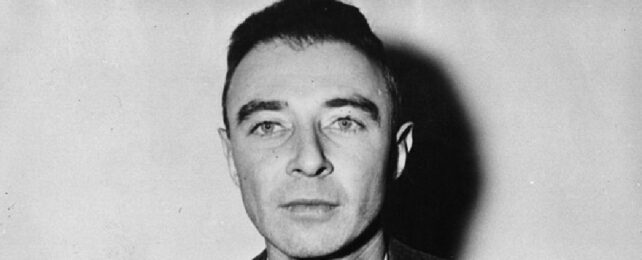Christopher Nolan's new film Oppenheimer is filled with the titular physicist's worst nightmares of nuclear war.
Ominous visions of mushroom clouds bursting from city after city, stacks of fire rising past the clouds, and ripples of radiation engulfing Europe haunt Cillian Murphy's J. Robert Oppenheimer.
As the director of the secret Los Alamos laboratory, where a group of scientists developed and tested the world's first atom bomb, Oppenheimer was well aware of the power his lab was unleashing.
He famously called it "Death, the destroyer of worlds."
But he only knew half the story.
Oppenheimer's night terrors pale in comparison to the worst-case scenario scientists predict today.
An outbreak of nuclear war, with hundreds or thousands of atomic explosions, could send the planet into an apocalyptic state called nuclear winter, in which billions of people would starve to death.
"Nuclear weapons are the greatest danger that the world faces and has been facing for a long time, but we've forgotten about it," Alan Robock, a professor at Rutgers University and a pioneer of nuclear-winter research, told Insider.
So far, he added, "I think we've been very lucky."
Nuclear winter is a theory, based on models and debated within the scientific community – like many of the predictions atomic scientists made in Oppenheimer's time. Here's how it goes.
What nuclear winter would be like: dark, cold, and irradiated, with up to 5 billion deaths
It would start with nuclear bombs setting cities ablaze. Each nuclear explosion would ignite countless little fires, which can coalesce into huge, uncontrollable firestorms.
In the event of an ongoing back-and-forth of nuclear attacks, all those firestorms could send so much soot into the stratosphere that it forms a belt around the planet and blocks out the sun, causing temperatures to drop by up to 15 degrees Celsius. This global cooling could last years.
The darkness, cold, and radiation from nuclear fallout would destroy much of Earth's plant and animal life.
Five scientists, including Carl Sagan, first proposed this theory in a 1983 paper.
Since then, a team of cross-disciplinary scientists, including Robock, has combined climate models and food-production simulations to better understand the possibility of nuclear winter.
Last year, they published findings that fish and livestock would not be able to sustain the world if nuclear winter wiped out crops. They concluded that a nuclear war between the US and Russia could cause 5 billion people to starve to death.
"More than 10 times as many people would die from starvation than would die from the direct effects [of the bombs]," Robock said.
Even a smaller nuclear war between India and Pakistan could send millions of tons of soot into the atmosphere and cause global food shortages, they've calculated. Robock and his colleagues estimated that scenario would kill about 2 billion people.
"I hope [the movie] will make people ask questions about why we still have nuclear weapons, how could they possibly be used, and why we would need them," he said.
This article was originally published by Business Insider.
More from Business Insider: